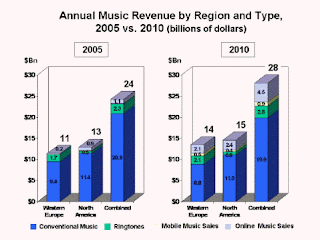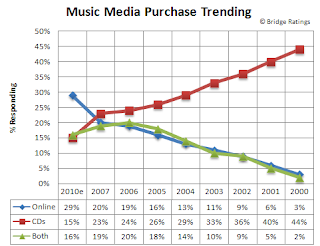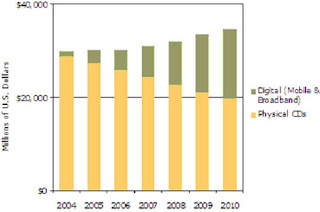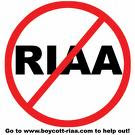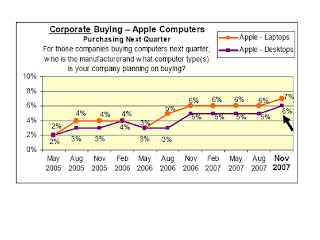
Though some in the MIcrosoft operating system ecosystem will pooh pooh the news, a recent Changewave Alliance survey suggests the strongest enterprise buying of Apple computers since 2005. It may be the Leopard effect, the iPod or iPhone effect. Or maybe, as more
computing moves to Web interfaces, it is becoming more rational again to choose "easy to use" devices, as the key applications can be supported either on a Windows or Leopard operating system.
As somebody who was forced to give up Apple machines in favor of the PCs everybody else in the enterprise was using, this is a welcome change. Somebody needs to update this, but it is priceless:
What if Operating Systems Were Airlines?
DOS Airlines
Everybody pushes the airplane until it glides, then they jump on and let the plane coast until it hits the ground again, then they push again jump on again, and so on.
OS/2 Airlines
The terminal is almost empty, with only a few prospective passengers milling about. The announcer says that their flight has just departed, wishes them a good flight, though there are no planes on the runway. Airline personnel walk around, apologising profusely to customers in hushed voices, pointing from time to time to the sleek, powerful jets outside the terminal on the field. They tell each passenger how good the real flight will be on these new jets and how much safer it will be than Windows Airlines, but that they will have to wait a little longer for the technicians to finish the flight systems.
Once they finally finished you're offered a flight at reduced cost. To board the plane, you have your ticket stamped ten different times by standing in ten different lines. Then you fill our a form showing where you want to sit and whether the plane should look and feel like an ocean liner, a passenger train or a bus. If you succeed in getting on the plane and the plane succeeds in taking off the ground, you have a wonderful trip...except for the time when the rudder and flaps get frozen in position, in which case you will just have time to say your prayers and get in crash position.
Windows Air
The terminal is pretty and colorful, with friendly stewards, easy baggage check and boarding, and a smooth take-off. After about 10 minutes in the air, the plane explodes with no warning whatsoever.
Windows NT Air
Just like Windows Air, but costs more, uses much bigger planes, and takes out all the other aircraft within a 40-mile radius when it explodes.
Windows XP
See "Windows NT"
Windows Vista
See "Windows NT," but prettier, if useless
Mac Airlines
All the stewards, stewardesses, captains, baggage handlers, and ticket agents look the same, act the same, and talk the same. Every time you ask questions about details, you are told you don't need to know, don't want to know, and would you please return to your seat and watch the movie.
Unix Airlines
Each passenger brings a piece of the airplane and a box of tools to the airport. They gather on the tarmac, arguing constantly about what kind of plane they want to build and how to put it together. Eventually, they build several different aircraft, but give them all the same name. Some passengers actually reach their destinations. All passengers believe they got there.
Wings of OS/400
The airline has bought ancient DC-3s, arguably the best and safest planes that ever flew, and painted "747" on their tails to make them look as if they are fast. The flight attendants, of course, attend to your every need, though the drinks cost $15 a pop. Stupid questions cost $230 per hour, unless you have SupportLine, which requires a first class ticket and membership in the frequent flyer club. Then they cost $500, but your accounting department can call it overhead.
Mach Airlines
There is no airplane. The passengers gather and shout for an airplane, then wait and wait and wait and wait. A bunch of people come, each carrying one piece of the plane with them. These people all go out on the runway and put the plane together piece by piece, arguing constantly about what kind of plane they're building. The plane finally takes off, leaving the passengers on the ground waiting and waiting and waiting and waiting. After the plane lands, the pilot telephones the passengers at the departing airport to inform them that they have arrived.
Newton Airlines
After buying your ticket 18 months in advance, you finally get to board the plane. Upon boarding the plane you are asked your name. After 6 times, the crew member recognizes your name and then you are allowed to take your seat. As you are getting ready to take your seat, the steward announces that you have to repeat the boarding process because they are out of room and need to recount to make sure they can take more passengers.
VMS Airlines
The passengers all gather in the hanger, watching hundreds of technicians check the flight systems on this immense, luxury aircraft. This plane has at least 10 engines and seats over 1,000 passengers. All the passengers scramble aboard, as do the necessary complement of 200 technicians. The pilot takes his place up in the glass cockpit. He guns the engines, only to realise that the plane is too big to get through the hangar doors.
BeOS Air
You have to pay for the tickets, but they're half the price of Windows Air, and if you are an aircraft mechanic you can probably ride for free. It only takes 15 minutes to get to the airport and you are cheuferred there in a limozine. BeOS Air only has limited types of planes that only only hold new luggage. All planes are single seaters and the model names all start with an "F" (F-14, F-15, F-16, F-18, etc.). The plane will fly you to your destination on autopilot in half the time of other Airways or you can fly the plane yourself. There are limited destinations, but they are only places you'd want to go to anyway. You tell all your friends how great BeOS Air is and all they say is "What do you mean I can't bring all my old baggage with me?"
Linux Airlines
Disgruntled employees of all the other OS airlines decide to start their own airline. They build the planes, ticket counters, and pave the runways themselves. They charge a small fee to cover the cost of printing the ticket, but you can also download and print the ticket yourself. When you board the plane, you are given a seat, four bolts, a wrench and a copy of the seat-HOWTO.html. Once settled, the fully adjustable seat is very comfortable, the plane leaves and arrives on time without a single problem, the in-flight meal is wonderful. You try to tell customers of the other airlines about the great trip, but all they can say is, "You had to do what with the seat?"









